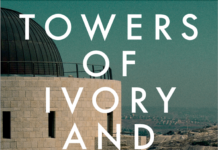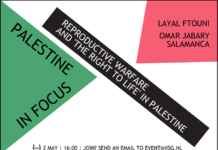Anshel Pfeffer
The National / August 3, 2023
Tel Aviv is middle-class Israel’s dream, but Jerusalem is its harsh reality.
Few Israelis remember who Eliezer Kaplan was. The country’s first finance minister – the man whose job it was to find the money to build a state – died in 1952 at the age of 61, with his job far from finished. But the timing of Mr Kaplan’s death, and the important position he had occupied in the country’s early years, meant his name was commemorated in some central locations, even though it means nothing to nearly everyone who passes there today.
In West Jerusalem, Kaplan Street goes through the central government quarter. At one end is Israel’s Supreme Court, then the Foreign Ministry, the Bank of Israel, the Prime Minister’s Office and the Finance Ministry. At the other end is the Knesset, Israel’s parliament.
There’s a Kaplan Street in Tel Aviv as well. It’s one of the main entrances to the city and on it is another of the main government compounds – the Defence Ministry and the headquarters of the Israeli army.
Over the past eight months, as hundreds of thousands of Israelis have taken to the streets protesting the plans of Prime Minister Benjamin Netanyahu’s coalition to drastically weaken the Supreme Court, both Kaplan streets have been venues for massive anti-government rallies. The name has become so synonymous with the protests that one of the main organizing groups has even named itself “Kaplan Force”. But when they call, through a thousand WhatsApp messages saying, “tonight everyone is on Kaplan”, there’s no need to specify which Kaplan they’re referring to.
The protests are happening around Israel, at over a hundred locations, but it’s been clear all along that their focal point is Tel Aviv. That is where they began 30 weeks ago, in the square outside the Ha’Bimah national theatre, gradually spreading to Kaplan Street and ending most nights blocking the Ayalon Highway. It’s where the biggest numbers have gathered and the battles with police have been the fiercest.
Thousands have joined a weekly rally on Saturday nights outside the President’s residence in Jerusalem, which Israel claims as its capital but the international community does not recognize. And a few massive rallies have been held outside the Knesset and the Supreme Court. But Tel Aviv remains the capital of Israel as far as the protest movement is concerned.
Five days before the Knesset was due to vote on abolishing the Supreme Court’s use of the “Reasonableness Standard”, which allowed the Court to strike down laws it deemed particularly objectionable, the protesters began marching to Jerusalem. By the time they arrived, over 70,000 had joined the final stage of the march, walking up the steep approaches to the city in the sweltering sun on a Saturday afternoon.
For many, the long snaking chain of men, women and children, lining Highway One with their Israeli flags and protest banners, was a stirring sight, but it also made clear that for the broad protest movement, Jerusalem was an away match, while in Tel Aviv they are on home turf.
This is not just about the numbers or where people actually live. Even before Israel’s foundation in 1948, there was a tension within the Zionist movement between members in Jerusalem and Tel Aviv.
The official headquarters of the movement, the Jewish Agency, had its main offices in Jerusalem. But much of the organizational muscle, the Histadrut trade union federation, was down on the coast in Tel Aviv.
Jerusalem was an ancient “mixed” city. In addition to its Muslims, Christians and great mix of nationalities, many of the Jews living in Jerusalem were ultra-Orthodox anti-Zionists. And while Zionism claimed Jerusalem as its capital, Tel Aviv, the new, so-called “First Hebrew City” was rapidly becoming its main centre of commerce and culture.
On May 14, 1948, David Ben-Gurion proclaimed Israel’s independence in Tel Aviv. Eighteen months later, when he decreed that the Knesset and the rest of the government’s offices would move to Jerusalem, though only a tiny of handful nations recognize it as the capital, there was a general outcry among the officials. Few of them wanted to move from the comfort of Tel Aviv to what was then a poor border town, the eastern part of which, along with a section of the main highway to the coast, was under Jordanian control. Commuting along the other narrow winding road would take three hours each way. Ben-Gurion got his way, but the Defence Ministry and the Histadrut stuck in their heels and stayed in Tel Aviv.
Despite the declarations of Israeli politicians, few of whom actually lived in Jerusalem, over the decades that Jerusalem has been called “Israel’s eternal undivided capital” it was and remains a divided city. The hundreds of thousands of Palestinians who were annexed to Israel after the Six-Day War in 1967 didn’t accept that. And the growing Jewish ultra-Orthodox community had ideas of its own as well. Today’s Jerusalem is three different cities, with the Palestinians in the east, the ultra-Orthodox in the north and the rest of the Israelis in the south and west.
While few in the protest movement are willing to admit it, the ongoing conflict within Israel over the powers of the Supreme Court and the future of Israel’s limited and fragile democracy is very much a battle between Jerusalem and Tel Aviv.
Tel Aviv represents Israel as the secular and middle-class place Israelis want to believe their country is – liberal, high-tech, and western cosmopolitan. Jerusalem is the reality they have tried to ignore for so many years: a divided city, riven by nationalism and religion, where the Knesset and City Hall are controlled by right-wing and ultra-Orthodox parties and the Palestine-Israel conflict and the occupation are a daily reality. They don’t feel at home there and would prefer not having to go and protest outside the Knesset if they had a choice. But as much as they wish it could be, the State of Tel Aviv is not autonomous, and Israel’s government, which they didn’t vote for, still controls them, and it represents West Jerusalem.
Even if the protesters and Israel’s opposition succeed in rolling back the Netanyahu government’s judicial overhaul plans, Jerusalem and all the unresolved issues it stands for will still be there. They can no longer ignore it.
Anshel Pfeffer is a writer for Haaretz and the Israel correspondent for The Economist. He is the author of Bibi: The Turbulent Life and Times of Benjamin Netanyahu












